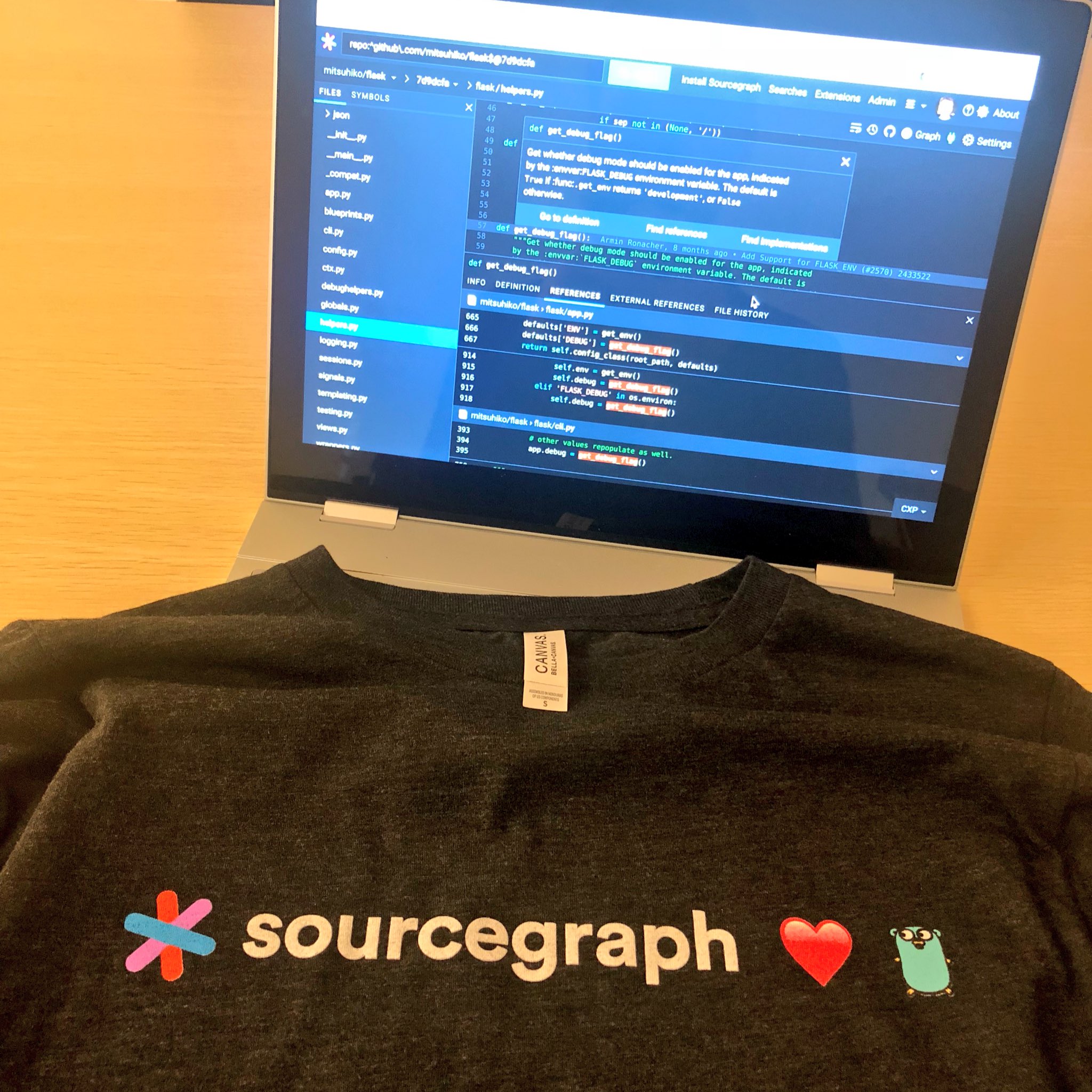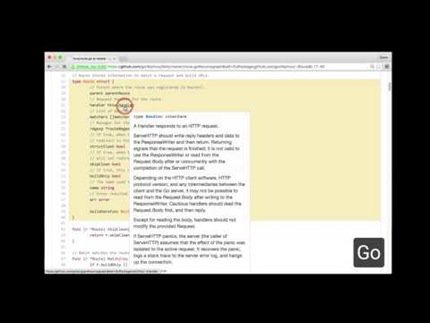Join Transform 2021 this July 12-16. Register for the AI event of the year.
Quinn Slack from Winnetka, IL. Age: 33 years old. Also known as: Mr Quinn Slack. View Full Report. Landline number (847) 446-9005. Mobile number (847) 347-8478. View phone numbers, addresses, public records, background check reports and possible arrest records for Nathan Quinn Slack. Whitepages people search is the most trusted directory. Background Checks. Valentinstag free online jigsaw puzzles on TheJigsawPuzzles.com. Play full screen, enjoy Puzzle of the Day and thousands more.
- Taste Nate/Evan Slack - Sunny (prod. Evan Slack), Lil Blood feat. Maj Gutta, Shady Nate, J Stalin - Expensive Taste, Taste Nate, Danielle Renee, GiGiO - Activate, Taste Nate - Dogs Plan, Taste.
- Quinn Slack I live in Mill Valley (just north of San Francisco) and work at Sourcegraph as CEO. I love programming and studied computer science at Stanford.
Sourcegraph, a universal code search platform used by companies such as Amazon, Uber, Atlassian, PayPal, Qualtrics, and Cloudflare, has launched a new feature designed to help enterprises accelerate their development “velocity,” a metric used in agile development to represent the amount of work a team handles during a sprint.
With batch changes, which officially rolls out today, companies can automate and track large-scale code changes across all their repositories and code hosts, saving up to 80% of their time versus existing manual methods, according to Sourcegraph.
Universal
Quinn Slacker
Founded out of San Francisco in 2013, Sourcegraph straddles the various strands that constitute modern developer operations (DevOps) teams, including editors, repositories, programming languages, file formats, and more. It’s ultimately designed to fix the “big code” problem, which is characterized by the sheer volume and variety of source code, systems, and tools that companies have to manage across projects. As expectations around speedy software cycles increases, this puts extra pressure on developers to optimize how they work.
This is where Sourcegraph comes into play, serving to help developer teams find and fix things across all their code. So if a developer needs to know how to use a particular function or service, or where the correct library is for a particular task, they turn to Sourcegraph.
While Sourcegraph has always allowed its users to search for every repository file and line of code that might need to be modified as part of a large-scale refactor, it didn’t previously offer any functionality to execute this — and that is what batch changes is all about. “Sourcegraph now enables companies to automate and support large-scale code changes end-to-end,” CEO and cofounder Quinn Slack told VentureBeat.
Find and replace
With batch changes, Sourcegraph is looking to fix a problem that is more inclined to impact larger businesses with multiple developer teams and departments, though in truth it could prove useful for any project that shares code across multiple repositories. Companies will often create boilerplate code and components that can be reused by different teams and projects, but when it comes to modifying that code, they then have to relay those changes to all the other teams that use it — this can be “slow, painful, and have a low completion rate,” according to Slack. “This might result in a lot of legacy code just not being updated, which creates technical debt.”
And so with batch changes, companies can alter the boilerplate code and apply the changes to whichever repository the code may reside in. “They can then track the progress of that large-scale change as repository owners review and accept it,” Slack added.
Batch changes could prove useful in myriad scenarios, such as issuing security fixes. The code to fix a flaw might be straightforward to write, but if the issue exists in hundreds of repositories, it could be a ghastly time-consuming nightmare deploying the update and then ensuring each pull request is accepted into the main codebase.
Proprietary
Major technology companies such as Facebook and Google have developed their own proprietary universal code search platforms for use internally, and these often include tools to automate code changes — Google has built a tool called Rosie for its “find-and-replace” functionality.
“Instead of building this functionality internally, which would be extremely time and cost intensive, businesses can now use batch changes,” Slack said.
Sourcegraph has raised $73 million across two rounds of funding in the past 12 months, with big-name backers including Sequoia, Redpoint, and David Sacks’ Craft Ventures.
VentureBeat
VentureBeat's mission is to be a digital town square for technical decision-makers to gain knowledge about transformative technology and transact.Our site delivers essential information on data technologies and strategies to guide you as you lead your organizations. We invite you to become a member of our community, to access:- up-to-date information on the subjects of interest to you
- our newsletters
- gated thought-leader content and discounted access to our prized events, such as Transform 2021: Learn More
- networking features, and more
| Original author(s) | Andrea Bittau, Mike Hamburg, Mark Handley, David Mazières, Dan Boneh and Quinn Slack. |
|---|---|
| Type | communication encryption protocol |
| Website | tcpcrypt.org |
In computer networking, tcpcrypt is a transport layer communication encryption protocol.[1][2] Unlike prior protocols like TLS (SSL), tcpcrypt is implemented as a TCP extension. It was designed by a team of six security and networking experts: Andrea Bittau, Mike Hamburg, Mark Handley, David Mazières, Dan Boneh and Quinn Slack.[3] Tcpcrypt has been published as an Internet Draft.[4] Experimental user-space implementations are available for Linux, Mac OS X, FreeBSD and Windows. There is also a Linux kernel implementation.
The TCPINC (TCP Increased Security) working group was formed in June 2014 by IETF to work on standardizing security extensions in the TCP protocol.[5] In May 2019 the working group released RFC8547 and RFC8548 as an experimental standard for Tcpcrypt.
Description[]
Tcpcrypt provides opportunistic encryption — if either side does not support this extension, then the protocol falls back to regular unencrypted TCP. Tcpcrypt also provides encryption to any application using TCP, even ones that do not know about encryption. This enables incremental and seamless deployment.[6]
Quinn Blackout Drapes
Unlike TLS, tcpcrypt itself does not do any authentication, but passes a unique 'session ID' down to the application; the application can then use this token for further authentication. This means that any authentication scheme can be used, including passwords or certificates. It also does a larger part of the public-key connection initiation on the client side, to reduce load on servers and mitigate DoS attacks.[6]
History[]
The first draft of the protocol specification was published in July 2010, with reference implementations following in August. However, after initial meetings in IETF, proponents of the protocol failed to gain traction for standardization and the project went dormant in 2011.[7]
In 2013 and 2014, following Edward Snowden's Global surveillance disclosures about the NSA and agencies of other governments, IETF took a strong stance for protecting Internet users against surveillance.[8][9] This aligns with tcpcrypt's goals of ubiquitous transparent encryption, which revived interest in standardization of the protocol. An official IETF mailing list was created for tcpcrypt in March 2014,[10] followed by the formation of the TCPINC (TCP Increased Security) working group in June[5] and a new version of the draft specification.
Performance[]
Tcpcrypt enforces TCP timestamps and adds its own TCP options to each data packet, amounting to 36 bytes per packet compared to plain TCP. With a mean observed packet size for TCP packets of 471 bytes,[11] this can lead to an overhead of 8% of useful bandwidth. This 36 bytes overhead may not be an issue for internet connections faster than 64kbs, but can be an issue for dial up internet users.
Compared to TLS/SSL, tcpcrypt is designed to have a lower performance impact. In part this is because tcpcrypt does not have built-in authentication, which can be implemented by the application itself. Cryptography primitives are used in such a way to reduce load on the server side, because a single server usually has to provide services for far more clients than reverse.[6]
Implementations[]
The current user space implementations are considered experimental and are reportedly unstable on some systems. It also does not support IPv6 yet, which is currently only supported by the Linux kernel version. It is expected that once tcpcrypt becomes a standard, operating systems will come with tcpcrypt support built-in, making the user space solution unnecessary.[citation needed]
See also[]
- Obfuscated TCP – an earlier failed proposal for opportunistic TCP encryption


References[]
- ^Andrea Bittau; et al. (2010-08-13). The case for ubiquitous transport-level encryption(PDF). 19th USENIX Security Symposium.
- ^Michael Cooney (2010-07-19). 'Is ubiquitous encryption technology on the horizon?'. Network World.
- ^'tcpcrypt – About us'. tcpcrypt.org.
- ^Bittau, A.; D. Boneh; M. Hamburg; M. Handley; D. Mazieres; Q. Slack (21 July 2014). Cryptographic protection of TCP Streams (tcpcrypt). IETF. I-D draft-bittau-tcpinc-01.
- ^ ab'TCP Increased Security (tcpinc)'. Charter for Working Group. Retrieved 25 July 2014.CS1 maint: discouraged parameter (link)
- ^ abcJake Edge (2010-08-25). 'Transport-level encryption with Tcpcrypt'. LWN.net.
- ^Mark Handley (9 September 2013). 'Kernel patch for Linux 3.10.10?' (Mailing list).
Two years ago we failed to get much traction for the takeup of tcpcrypt.
- ^Richard Chirgwin (14 May 2014). 'IETF plans to NSA-proof all future internet protocols'. The Register.
- ^Mark Jackson (13 May 2014). 'IETF Commits to Hamper State Sponsored Mass Internet Surveillance'. ISP Review.
- ^'New Non-WG Mailing List: Tcpcrypt -- Discussion list for adding encryption to TCP' (Mailing list). IETF Secretariat. 24 March 2014.
- ^'Sean McCreary and kc klaffy'. 'Trends in Wide Area IP Traffic Patterns A View from Ames Internet Exchange'.

External links[]
